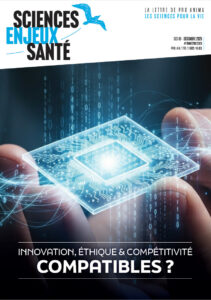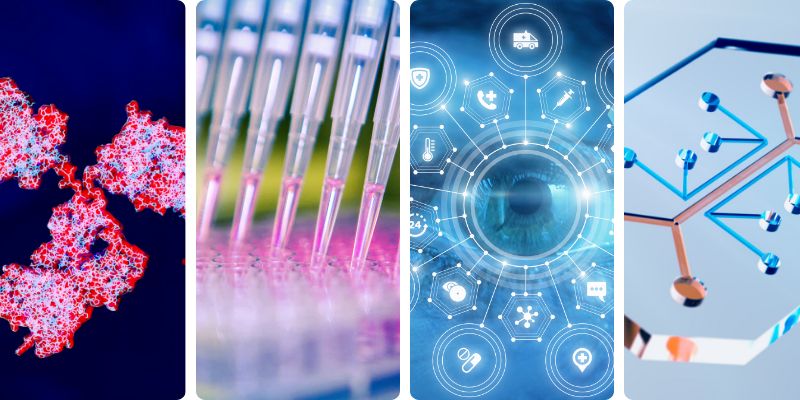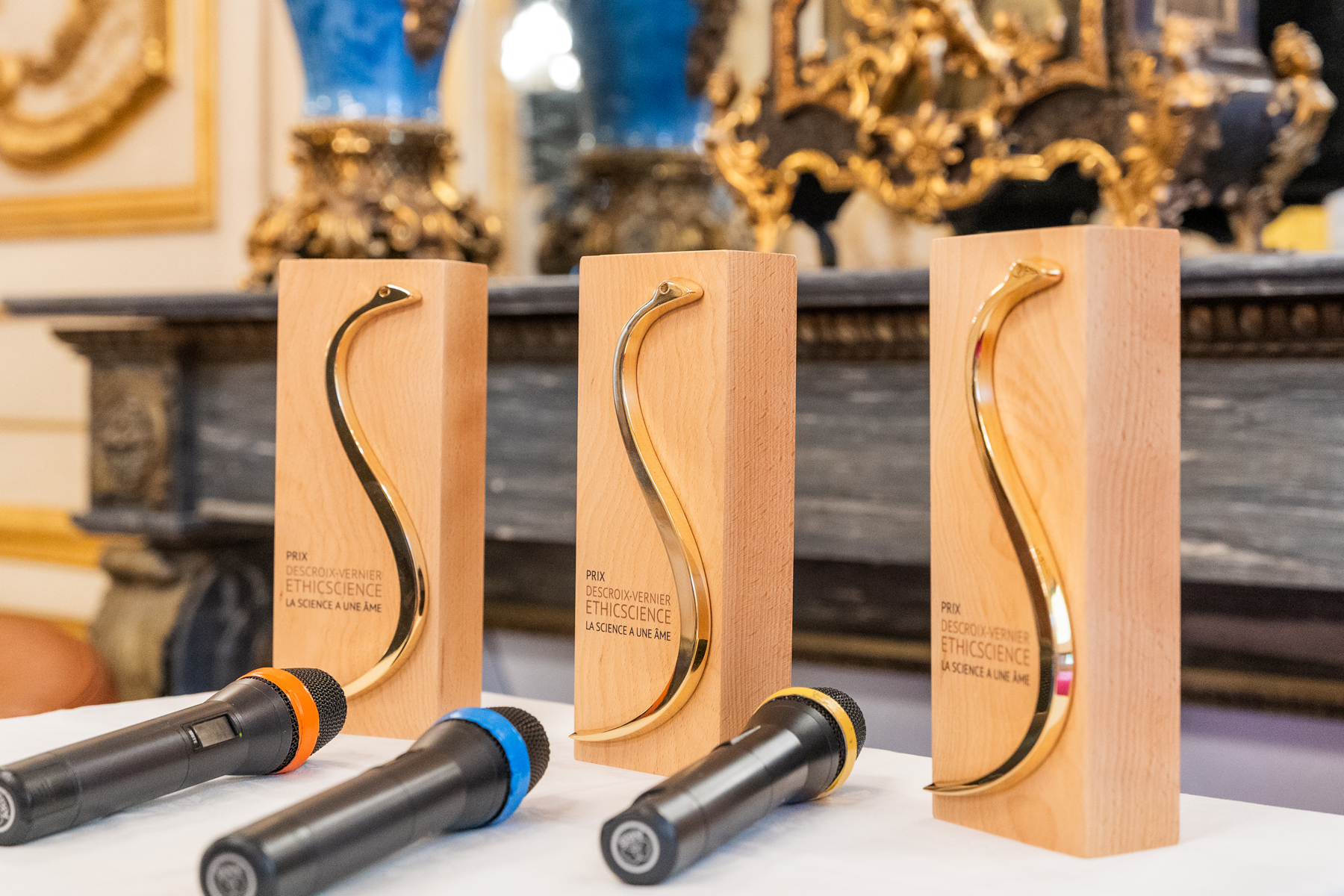
Descroix-Vernier EthicScience Prize 2025
The key players
March 2025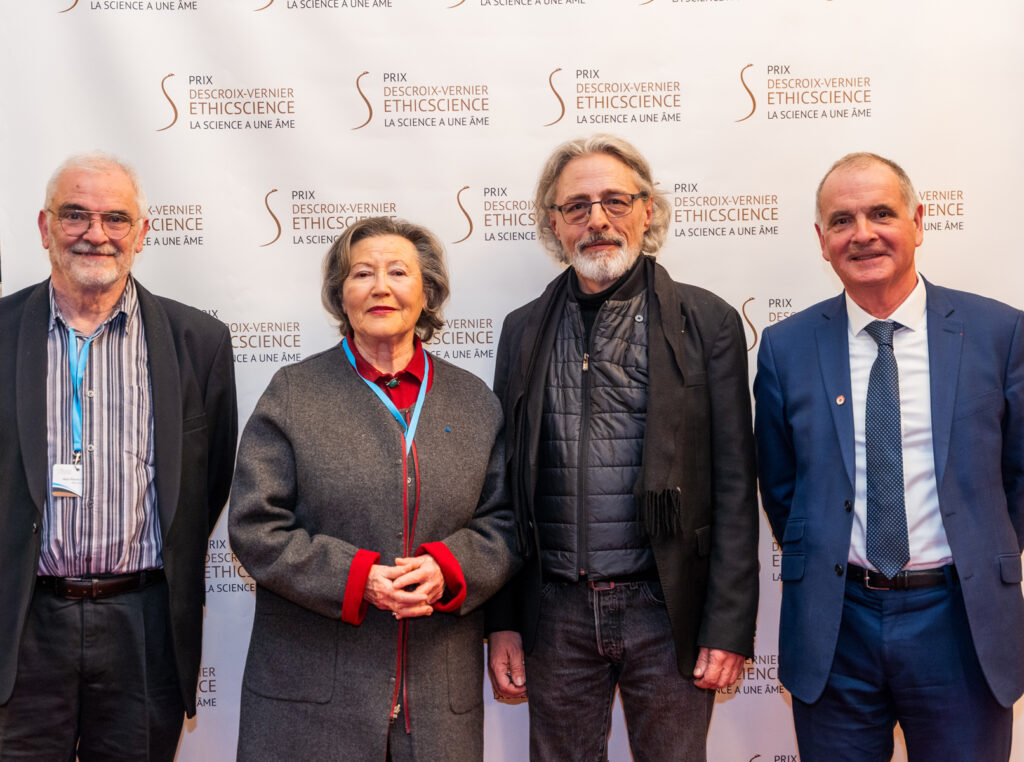
Christiane Laupie-Koechlin, Comité scientifique Pro Anima & Prize’s funder, with Dr Jean-Pierre Cravedi, Jean-Baptiste Descroix-Vernier & French Senator Arnaud Bazin
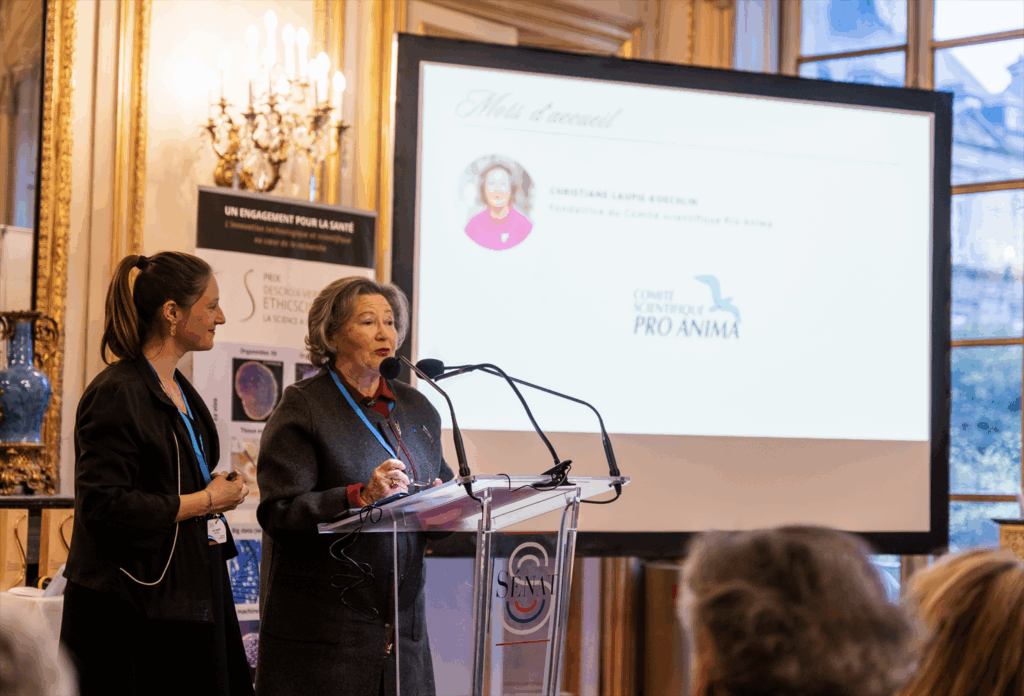
Christiane Laupie-Koechlin & Dr Lilas Courtot, science head of Pro Anima
SENATOR ARNAUD BAZIN : DVES PRIZE’S MENTOR
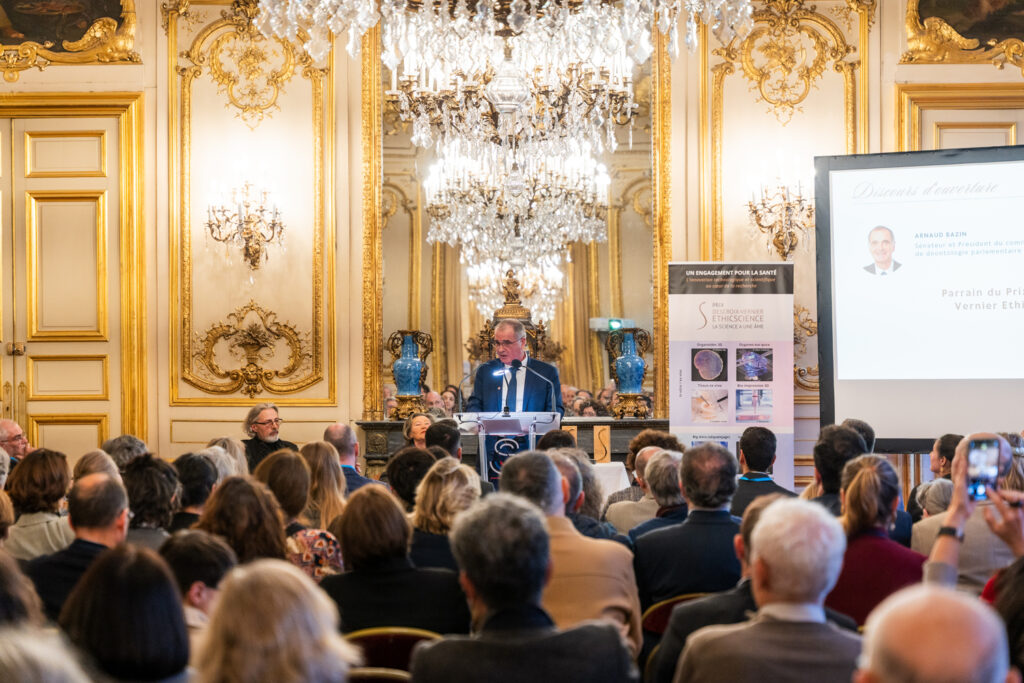
Pro Anima Committee: The DVES Prize is the only French award entirely dedicated to non-animal research, highlighting new methods and technologies. Some of which, such as organ-on-chips and AI, demonstrate real potential for biomedical research and toxicological testing. In May 2024, you submitted a written question to the French Minister of Health regarding the use of liver-chips in the preclinical stage. What advantages and promises do you see in these new methods and technologies?
Senator Arnaud Bazin: New methods, such as organ-on-chips and in silico methods, open up major opportunities in biomedical research and toxicology. Organ-on-chips allow for more precise and predictive tests while eliminating the need for animals. Liver-on-chips, for example, make it possible to assess drug-induced liver injury (DILI) more reliably than an animal model. These new methods are also integrated into personalized medicine, to tailor treatments to the genetic and physiological characteristics of each patient.
With these technologies, not only are research and care becoming more effective, more representative of the human condition, faster, and more efficient, but it also helps to save significant amounts of animal suffering and lives.
P.A.: The implementation of non-animal methods is subject to political, scientific, and regulatory will and requires funding commensurate with the health, competitiveness, and innovation challenges of the 21st century. What levers do you consider essential, and what are the opportunities not to be missed for research in France in the coming years?
Senator A. Bazin: It is urgent to remove the regulatory requirement to conduct preclinical testing on animals (which dates back to the Nuremberg Code nearly 80 years ago), following the example of the United States in 2022. By imposing an outdated testing method on drug developers, we encourage the approval of potentially harmful drugs to human subjects (remember that 90% of drugs fail human trials).
As long as this requirement persists, the development of these techniques will be hampered.
At the same time, these new methods must be integrated into regulatory drug development procedures. The EU should lead these regulatory developments and France, which occupies a notable global position in scientific research, has a duty to initiate this.
DR JEAN-PIERRE CRAVEDI : CHAIRMAN OF THE PRIZE SELECTION COMMITTEE
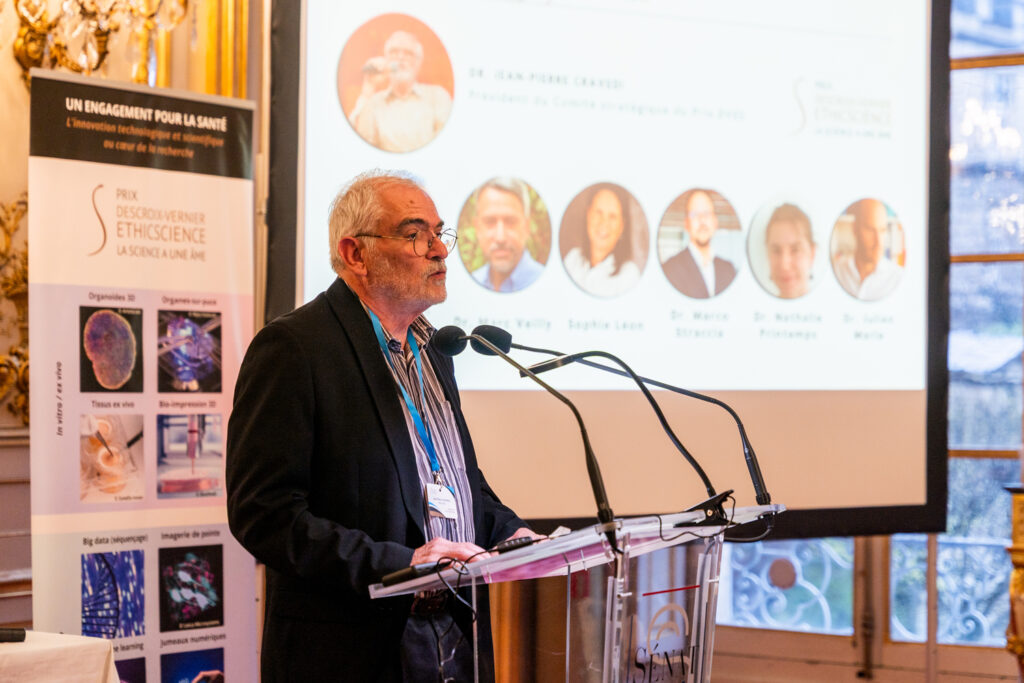
Pro Anima Committee: Assessing risks associated with exposure to chemicals is a major challenge for toxicologists, who are faced with the growing number of man-made substances, cocktail effects, and emerging risks such as nanoparticles and nanoplastics, for example. How do you see the relevance and potential of these new methods and technologies, particularly for toxicology in our present time and the future?
Dr. Jean-Pierre Cravedi: The most recent estimates speak of 350,000 chemical substances present on the global market and if we refer to the ECHA (European Chemicals Agency) more than 1,700 chemical substances produced or imported into Europe at more than one ton/year are registered annually. It should be noted that these 1,700 substances do not include medicines, food additives, flavorings, or pesticides, which are covered by other agencies. In addition to the challenge of producing sufficient toxicological data for all of these substances, we must add the difficulty of assessing the toxicology of very complex mixtures, or the countless degradation products that can form and persist in our environment.
This observation makes it clear that it is unrealistic to continue basing chemical risk assessment on lengthy and costly animal experiments. If we take the example of the toxicological studies currently required as part of a marketing authorization filing for a plant protection product, it requires more than 10 years of experimental work, the sacrifice of approximately 10,000 animals, at a cost of more than 3 million euros. The situation is essentially the same for medicines. There is therefore an incompatibility between the approaches implemented over the last 50 years in toxicology, pharmacology, or medical research and the challenges we face. If we add to this the uncertainties linked to animal-human extrapolations, there is no doubt that we must change our paradigm and rely much more on data produced in silico and in vitro, largely on human models. In this area, progress is rapid and the initiatives of several risk assessment agencies to integrate these approaches into the characterization of the risks of several categories of substances for exposed populations are encouraging.
“It is unrealistic to continue basing chemical risk assessment on lengthy and costly animal experiments”
P.A.: As chair of the DVES Prize strategic committee, you and the committee members selected the winners of this 2025 edition, which recognizes leading techniques and fields: cancerology, neurology, and obesity. In your opinion, what are the key areas of research we should focus our attention on and which the Prize could specifically encourage in the future?
Dr. Cravedi: The current fields of research with alternatives to animal testing are vast. In 2025, the winning applications took advantage of innovative approaches such as microfluidics and associated chips, a technology that allows, for example, understanding the tumor microenvironment and hoping to make anti-cancer treatments more effective or even to have neural sensors capable of identifying substances likely to interact with nerve cells and thus envisage significant progress in the treatment of pain or the diagnosis of neurodegenerative diseases.
Another rapidly growing field of investigation in the fields of biology, toxicology and medical research is that of organoids, which are “miniature organs”, generally made from stem cells. They constitute an intermediate model between 2D cell cultures and the whole organism and are applied to a wide variety of studies: screening of drugs or chemical substances, modeling of pathologies, identification of mechanisms of action, etc. Several organs are the subject of these methodologies: liver, kidney, lung, intestine, brain, etc. This year, we wanted to highlight work on human-based organoids mimicking obese adipose tissue in order to better understand the pathophysiological functioning of this tissue and ultimately improve the effectiveness of treatments available to healthcare professionals.
Computational toxicology, which relies on data from various sources and mathematical models capable of integrating them, allows for a better understanding of the health effects that toxins, drugs, and more broadly, chemicals can cause. Early developments in this area of research focused, among other things, on QSARs (quantitative structure-activity relationships) and led to significant advances in drug design and in predicting the toxic effects of chemicals.
Other initiatives, based on mathematical models, aim to predict the fate of natural or synthetic chemicals in the body. These include physiologically based pharmacokinetic (PBPK) models, which provide information on the absorption, distribution, metabolism, and excretion of molecules entering the body via oral, cutaneous, or pulmonary routes. Along the same lines, there is the development of mathematical models to extrapolate pharmacokinetic or pharmacodynamic data obtained in vitro to the whole-organ or whole-organism scale (IVIVE model).
Today, these approaches, which are diversifying and taking advantage of advances in AI (artificial intelligence), undoubtedly represent a promising avenue for research and for reducing the need for animal experiments. They complement the development of biological tools and deserve to be encouraged, just like the use of organoids or microfluidics.
JEAN-BAPTISTE DESCROIX VERNIER : PATRON OF THE PRIZE
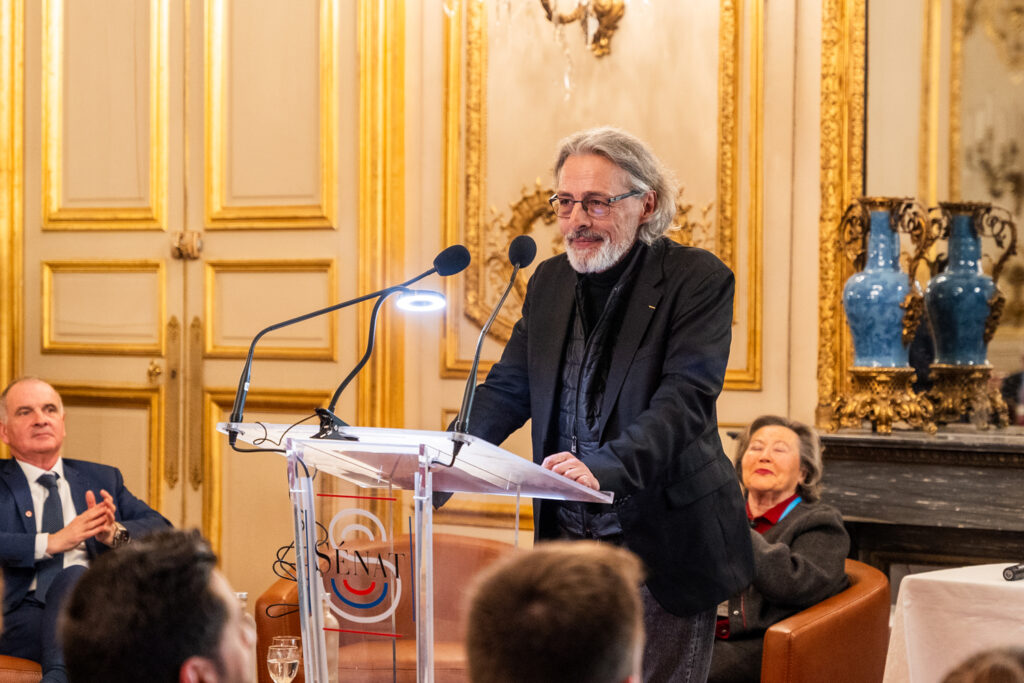
Pro Anima Committee: Pro Anima Committee: If you had to choose one of all your Foundation’s beneficial actions, which would you mention?
Jean-Baptiste Descroix-Vernier: I don’t know. How can you choose between a 75-year-old homeless person who was given decent housing, a 10-year-old girl who was lifted out of poverty, or a baby saved from dysentery? I go to sleep every night with thousands of smiling faces, and I wake up every morning with those who are crying. I don’t know whether to be proud of everything we’ve achieved or terrified by everything that remains to be done.
P.A: The DVES Prize is the only French prize entirely dedicated to non-animal research, and is among the best endowed European prizes in this field. What, in your opinion, is the essential benefit of supporting these new methods and technologies?
JBDV: Today, cutting-edge technologies exist for printing human tissue, growing tumors on chips to test treatments, and so on. These technologies must be promoted not only for the well-being of humanity, but also for its moral preservation. We cannot claim to save lives by destroying others when it is avoidable.
“We cannot claim to save lives by destroying others when it is avoidable”
P.A.: Non-animal research raises unprecedented public and global health challenges (humans, animals, environments). How do you envision the Prize evolving for its next edition in 2027 and its contribution to addressing these challenges?
JBDV: The DVES Prize is at the forefront of this movement. It rewards, showcases, and honors the finest in modern research. It could recognize new sciences, if they are put to the service of humanity. Artificial intelligence, for example, is one of them. Science, all sciences, are entering a new era where biology and high technology will become one, just as astrophysics has joined quantum physics. Nothing powerful is achieved without considering the weakest.
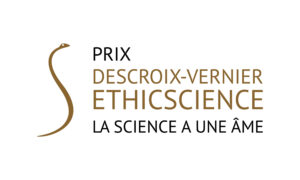
Image credit: Comité scientifique Pro Anima, Axel Coquemon

